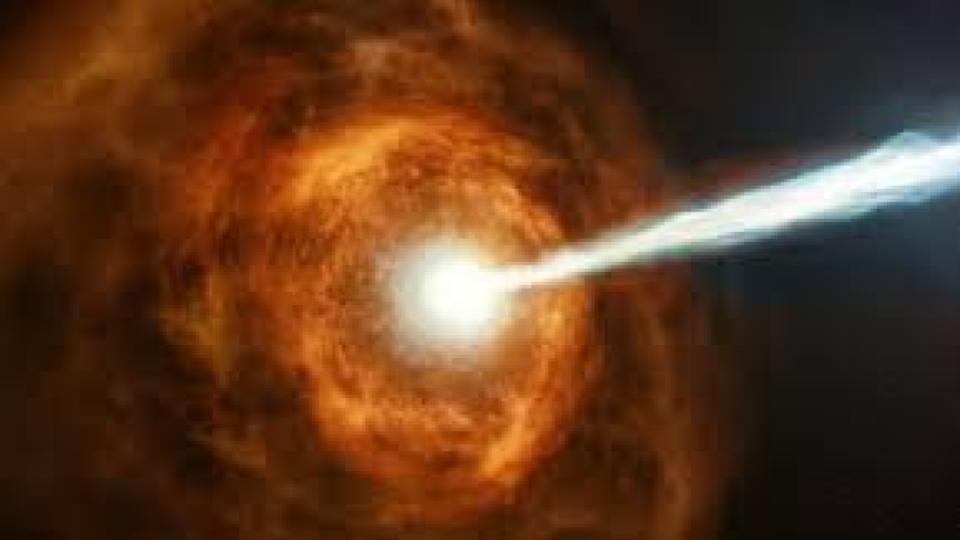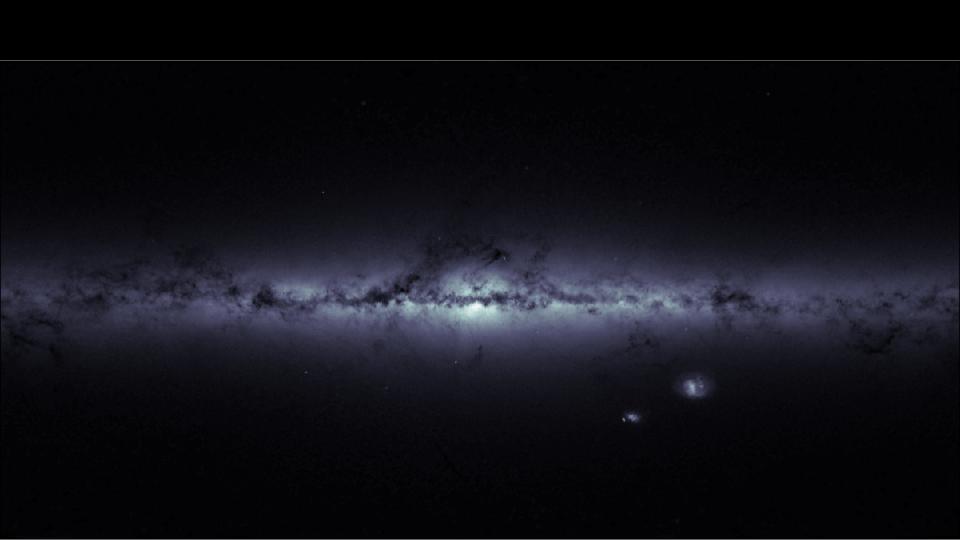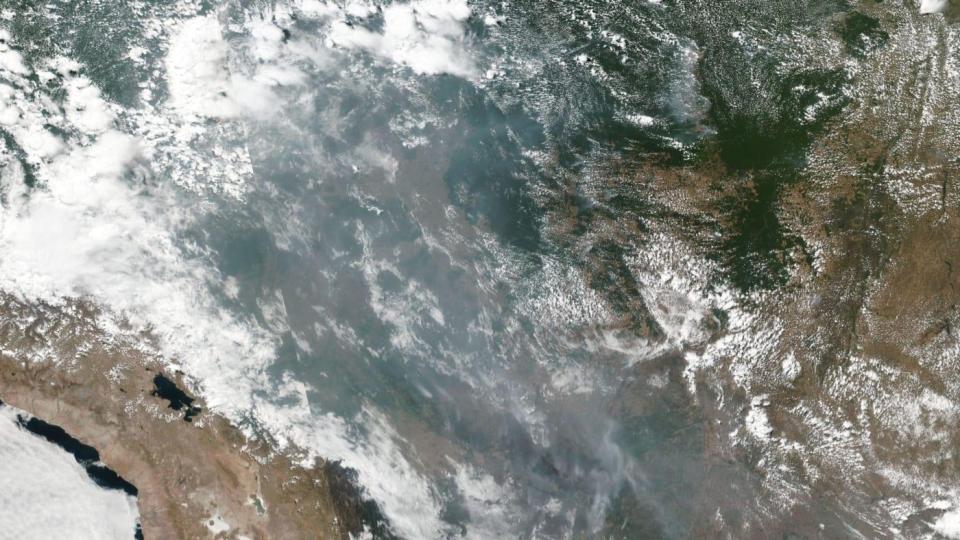Betelgeuse is still fading and we all have dreams of supernovae dancing through our heads. As we imagine what could be, we look at the cause of gamma ray bursts. We also look at how some think one star – nu Indi – is enough to get a timestamp on the collision of the Milky Way with the Gaia-Enceladus dwarf galaxy. We end things with a brief look at new climate change research none of us probably want to read, but we all need to understand.

As January enters its third week, we find ourselves looking extra hard at the star Betelgeuse. This giant star is unusually faint, and the prediction is that it should start getting brighter this month… but maybe maybe maybe, it will explode and go boom.
Maybe, but probably note.
But still… as we eagerly watch, we aren’t seeing it get brighter yet, and we all have supernovae on the mind.
One of the most common questions we’ve been getting is “do we need to worry about a Gamma Ray Burst, and, more specifically, do we need to worry about one hitting us. Thanks to new research from the University of Warwick, we now know the answer is a double no. We already knew that Betelgeuse wasn’t pointed our way, so if it did generate a Gamma Ray Burst, it would hit us. Now we know that this singular star shouldn’t even be able to generate a GRB to begin with.
It turns out that it takes 2 stars to make one Gamma Ray Burst. In research led by Ashley Chrimes and published in the Monthly Notices of the Royal Astronomical Society, scientists report that only massive stars in binary systems can generate bursts of gamma rays.
Long Gamma Ray Bursts, which can last from several seconds to several minutes, are generated when stars around ten times more massive than the Sun collapse and then explode as supernovae. The mystery had come in what caused some systems to have jets with gamma ray radiation while others didn’t. It didn’t appear to be the result of different star compositions. By modeling thousands of binary systems, they realized that the issue was actually one of geometry. Some systems are able to transfer momentum from the surviving star to the exploding star, spinning it up and driving the formation of jets, while the survivor dashes away.
What I particularly like about this result is that while it’s based on models, it makes predictions that can be observed. According to Crimes, “This model allows us to predict what these systems should look like observationally in terms of their temperature and luminosity, and what the properties of the companion are likely to be. We are now interested in applying this analysis to explore different astrophysical transients, such as fast radio bursts, and can potentially model rarer events such as black holes spiraling into stars.”
This result is just pleasing, and I look forward to seeing what more this team figures out as they move forward with this research.

- Merger of Milky Way with dwarf galaxy dated (Max Planck)
Let’s face it, stars, even individual stars, are often harder to understand then seems rational. It is particularly amazing when researchers make claims about what they believe can be learned from one random star orbiting through the Milky Way. According astronomers from the Max Planck Institute for Solar System Research, the star nu Indi can, on its own, is enough to provide a date to our galaxy’s collision with the Gaia-Enceladus dwarf galaxy. Here’s how they did it: They looked at its composition and claimed it formed in the halo. Its current position and orbit, however, mean that it got sent tumbling into the disk of the galaxy. By working it’s orbit backwards, they concluded that interactions during the our Milky’s collision roughly 11.5 billion years ago changed the stars orbit. I’m going to admit, this research seems like a bit of a stretch to me, but while I’m not convinced there are absolutely right, everything they are saying is consistent with everything they are observing – I’m just not willing to say this is the only explanation for this star’s position.
But this is a reminder that science is a process and a dialogue. We say what we think is true and argue for why it is true, and then we wait to see if we are proven or disproven by the course of time and further observations. I want these folks and their far out set of conclusions to be true, and here is to hoping that more observations and time bring more confidence to these results.
The fact that science is an evolving story is often lost in the moment to moment telling of the story. As we gather more data our understanding must adapt and yesterday’s explanations don’t necessarily match today’s truths. Nowhere in science is this seen more clearly than in our study of climate change. As we get more data, and as the world around us changes in ways we didn’t know was possible, our understanding of the future has to constantly cope with this new data.

Several months ago the new data we were trying to understand is the impact of Brazil’s wildfires. In a new paper in Science Advances, Paulo Brando and company report that by the year 2050, the emissions from fires could release more carbon than the remaining forests are able to sequester. This will make the forests with their fires a carbon source instead of a carbon sink.
This paper was written and submitted before we understood the horror that is this year’s Australian bush fires.
In the next couple of years, we’re going to be learning our world is responds to climate change in ways we previously never imagined. So far, all of the surprises have been in the direction of things being worse than we imagined. I don’t know what the answer is here. Plant every piece of land, and be careful of every piece spark of fire. Be good to one another. This is all I’ve got.
<———————>
And that rounds out our show for today.
Thank you all for listening. The Daily Space is produced by Susie Murph, and is a product of the Planetary Science Institute, a 501(c)3 non profit dedicated to exploring our Solar System and beyond. We are here thanks to the generous contributions of people like you. Want to become a supporter of the show? Check us out at Patreon.com/cosmoquestx
Each live episode of the Daily Space is archived on YouTube. If you miss an episode on Twitch.tv, you can find it later on youtube.com/c/cosmoquest. These episodes are edited and produced by Susie Murph.
We really wouldn’t be here without you – thank you for all that you do.


 We record most shows live, on Twitch. Follow us today to get alerts when we go live.
We record most shows live, on Twitch. Follow us today to get alerts when we go live.